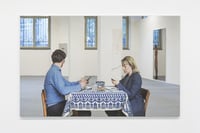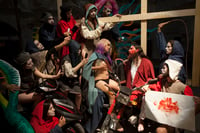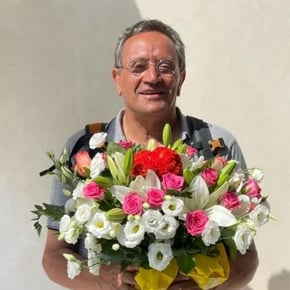Much more than a mere aesthetic object, the mirror has fascinated and influenced the culture and art of many populations.
From the sacred to the virtual and functional, how central is it to the worlds of science and art?
The mirror is historically the first device of virtuality, or augmented reality - either as a body of water that gave rise to the tragic reflection in the myth of Narcissus, or as an object that, according to recent reports, is said to have originated in North Africa and Asian: some think in Egypt, while others say Turkey.
It is considered sacred for its ability to offer an alternative reality, so much so that Narcissus fell in love with his own image thinking it was another person. In short, the mirror began as a dysfunctional device, something we can also see in Picasso's painting, Girl Before a Mirror, (1932, MoMA, New York) in which the woman in the mirror does not see herself, but another woman reflected there.It is a concept that has existed in all cultures and, in part, continues to exist in various forms today. The mirror does not only duplicate reality, but also transforms it, from its initial use in sacred rituals to its use for getting ready today.
We look in the mirror not only to see what we look like, but above all to 'fix' ourselves, to create the image of how we’d like to look. We are never still front of a mirror - we act and we do things. In this sense it doesn’t duplicate the here and now, but it is a means of travelling elsewhere, creating a hypothesis of the future and our next image and likeness in the present.
The mirror in neuroscience and art
This also happens when mobile phones are used for taking selfies, like modern existential aesthetic mirrors. This is why the sociologist Vanni Codeluppi, in his book 'Mi metto in vetrina', (I Put Myself on Display) 2015, Mimesis) spoke of society’s ‘display process’ – the media is so easy to use that it allows people to take selfies that expose them, and put them in a ‘store window’ on the Internet.
As Semir Zeki, a pioneering scientist in neuroaesthetics, says in his book Inner Vision (Blackwell Pub, 1993): artists realised much earlier than scientists how the brain is organised and functions in relation to areas of visual perception that led them to adopt devices for aesthetic reflection. This is also true of those artists who, since ancient times, have used the mirror in various ways for its strong symbolic qualities. In fact, when a mirror is represented in a work, it is never just a memento mori as a symbol of vanitas, but also a symbol of an alternative vision, demonstrated by the fact that, since ancient times, many artists have created works in which a mirror is painted or sculpted.
Above all, Michelangelo Pistoletto made real use of it from 1961 onwards, when he decided to use it as a base for silkscreened still images, which, together with the reflection of the environment and of people in motion, create a work that presents a reality that moves, transforming itself over time. This is no longer a representation of time as a metaphorical still image, but the active presence of relative time contained in Einstein’s theories.
Using technology to create unfinished works
All this is useful for our discussions related to the IBSA Foundation and Museo nazionale scienza e tecnologia Leonardo da Vinci di Milano project: Digital Aesthetics, especially with the 2018 series of Quadri Specchianti (mirror paintings) entitled ‘Comunicazione’ (Communication), which reproduces images of people intent on using their mobile phones. Pistoletto comments, “Inside smartphones is the ecstasy of research, because today the phenomenon of communication has taken on unimaginable features and dimensions. A mobile phone instantly networks us with the whole world. The ‘Quadri Specchianti’, as ante litteram computers, are both the present and the past. They are also selfies, in that they show the person with everything behind them. Humanity is now technologically connected, to the point where communication between individuals outside technology is at risk”.
Here technology is the mirror and the mobile phone its technical-optical medium in which we mirror ourselves, not only to communicate, but above all to create an augmented reality that is now the main part of a new reality immersed in a continuous future. A mirror and a mobile phone are open devices that, with our input, create open images and thus open works that are never finished.
It is a future in constant movement that also uses AI for aesthetic purposes. This is now a hot topic - so much so that artists are exploiting its possibilities. In this medium, in which traditional communication is the furthest thing, the selfie assumes an optical-social centrality aimed at redefining the meaning of the portrait and the self-portrait. Paradoxically, it is a new truth-producing tool as underlined in ‘Il Fazzoletto della Vera Icona’ (2018), by Luigi Presicce, a tableau vivant performed at MAP, the Museum of Popular Art, in Mexico City.
In this living work of art, with its revealing title of searching for the truth in an image, a group of performers are intent on using their mobile phones to film a holy icon - the true image - an achiropita not made by human hands, but by the hand of God, of whom the ubiquitous mobile phone in a spectacularised society in the mirror becomes a metaphor.



.png?width=300&name=Lo%20specchio%20(1).png)